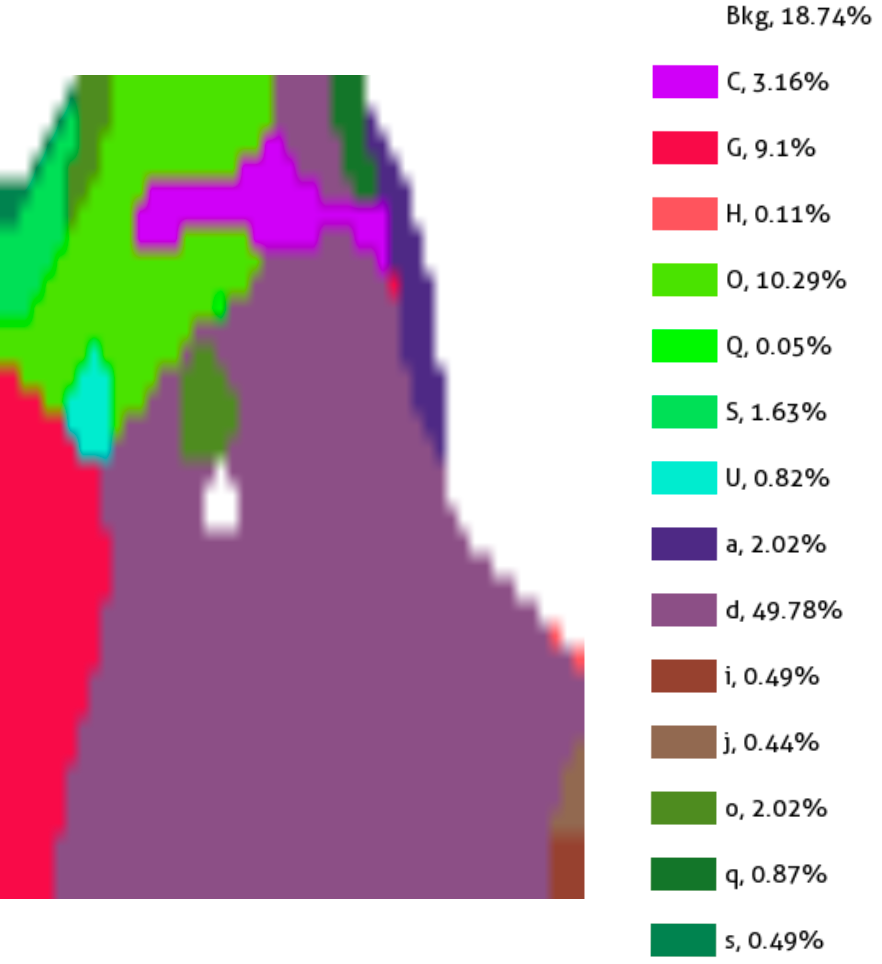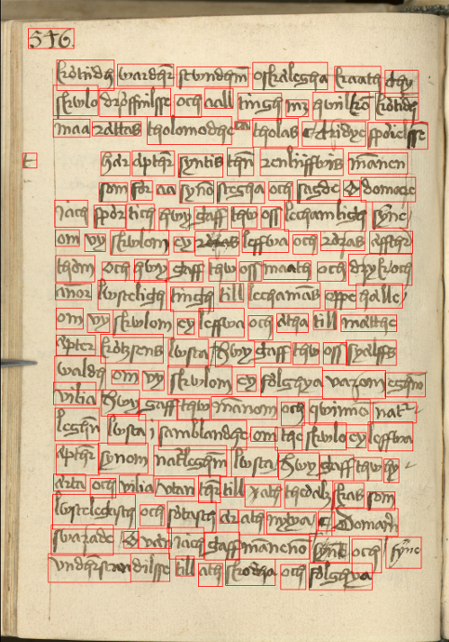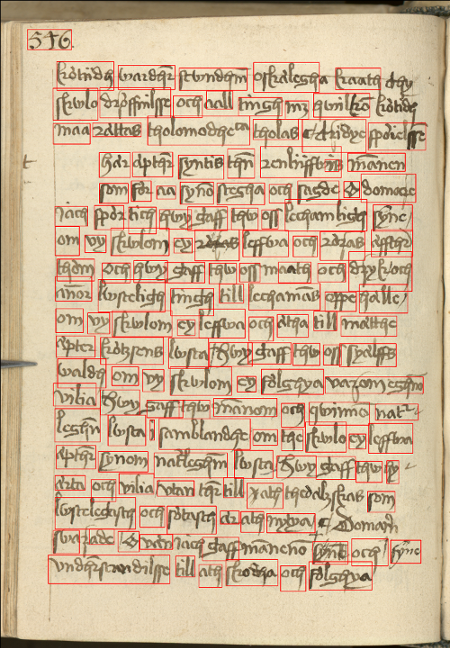
|
Large-Scale Quantification of Gene Expression in Arabidopsis
Azadeh Fakhrzadeh, Cris Luengo
Partners: Urs Fischer, Hardy Hall, Umeå Plant Science Centre, SLU
Funding: S-faculty, SLU
Period: 1402-1506
Abstract: Arabidopsis is the most important plant model organism. For animal model organisms such as Drosophila melanogaster (fruitfly), C. elegans (roundworm) and Danio rerio (zebrafish), efforts have been made to map gene expression on a per-cell or sub-cellular resolution. In this project, we developed tools to create the first such map for a plant species. We prepared thin sections of the root, hypocotyl and stem of the plant at various stages between sprouting and maturity. These sections were fluorescently stained such that the cell walls could be visualised in the confocal microscope. Each section also received a FISH (fluorescent in situ hybridization) stain for a particular protein. Sections were then imaged at a magnification that allowed most of the section to fit in the field of view.
This yielded several thousand cells in each image. Next, we developed a fully automatic segmentation and quantification pipeline that allowed measurement of relative amount and quality of the stained protein in each sub-cellular area (wall and lumen were separated, and each divided into four regions: inner, outer and two lateral). Cells were automatically classified into the various cell types, which allowed statistics of expression over each of the cell types, for example. We imaged several thousand sections, from both wild-type and mutant samples, stained for hundreds of different genes. The methods and some preliminary results will appear in Frontiers in Plant Science.
Stereo Visualisation of Historical Aerial Photographies
Anders Hast
Partners: Andrea Marchetti, IIT, CNR, Pisa, Italy.
Andrea Fusiello, Francesco Malapelle, University of Udine, Italy.
Period: 1101-
Abstract: Stereo images are important as they give a much better understanding of what is actually seen on the ground than single photos ever can. The important factor is the depth cue that helps understanding the content and adds the ability to distinguish between bushes and trees, stones and pillars, hills and valleys etc. During the operation Crossbow, the English meticulously photographed Europe during WWII to obtain stereo photos, which helped them in their search for military objects. This rich source of information that is now provided by the AFN in Rome, as well as other archives can be utilised by archeologists in a similar way. There are however still challenges to be faced in order to create useful stereo images that we have addressed and there are many possibilities and advantages. Together with IIT at CNR in Pisa, Italy, we have published papers in two international conferences discussing these things, namely Computer Applications and Quantitative Methods in Archaeology (CAA) in Siena, Italy and Digital Heritage in Granada, Spain. Moreover, in a collaboration with the University of Udine in Italy, we have published a new method for synthesising new views from photos at the International Conference on 3D Imaging in Liege, Belgium, making it possible to look at the stereo pairs from different views, which is otherwise not possible. A collaboration with several universities in Spain lead to a publication in which it was investigated how tumulus can be searched in what is now submerged megalithic landscape. All this, thanks to the fact that historical aerial photos are available and can be converted into stereo representation.
Image Analysis for Landscape Analysis
Anders Brun
Partners: Bo Malmberg, Michael Nielsen, Dept. of Human Geography, Stockholm University; Anders Wästfelt, Dept. of Economics, SLU
Funding: UU/SU
Period: 0901-
Abstract: This project is a collaboration with researchers at SU and SLU. It aims to derive information about the landscape (rural and city) from satellite images. The project focuses on using texture analysis of images, rather than only pixelwise spectral analysis, to segment the image into different meaningful regions.
Writer Identification and Dating
Fredrik Wahlberg, Anders Brun
Partners: Lasse Mårtensson, Dept. of Business and Economics Studies, Högskolan i Gävle
Funding: UU; Swedish Research Council
Period: 1401-
Abstract: The problem of identifying the writer of some handwritten text is of great interest in both forensic and historical research. Sadly the magical CSI machine for identifying a scribal hand does not exist. Using image analysis, statistical models of how a scribe used the quill pen on a parchment can be collected. These measurements are treated as a statistical distribution over writing practices. We using this information to identify single writers and perform style based dating of historical manuscripts. During 2015 we successfully analyzed over 10000 manuscript pages form the collection Svenskt Diplomatarium, from Riksarkivet. Using our newest methods, combining both image and text information, we are able to estimate the production date of a manuscript in this collection with a median error of less than 12 years. We were also successful in applying for a new grant from Riksbankens jubileumsfond, securing five new years of funding and a total budget of 13.4 MSEK. The title of the application was "New Eyes on Sweden's Medieval Scribes. Scribal Attribution using Digital Palaeography in the Medieval Gothic Script" and has Lasse Mårtensson as PI.
Optical Character Recognition of Handwritten Texts
Anders Brun, Ewert Bengtsson, Fredrik Wahlberg, Tomas Wilkinson, Kalyan Ram, Anders Hast
Partners: Lasse Mårtensson, Dept. of Business and Economics Studies, Högskolan i Gävle; Mats Dahllöf, Dept. of Linguistics and Philology, UU; Alicia Fornés, Universitat Autònoma de Barcelona, Italy; Jonas Lindström, Dept. of History, UU
Funding: Faculty of Languages and Humanities, UU; Swedish Research Council
Period: 1008-
Abstract: Optical character recognition (OCR) is still, after nearly 100 years of research, an active area of research. Currently, one of the frontiers is the recognition of handwritten text (HTR), in particular from historical documents. We submitted several grant applications and continued a collaboration with the Swedish Museum of Natural History. The application to Riksbankens jubileumsfond was successful, resulting in a new spinn-off project that will add support for five new year of research on digital paleography. Promising results during the year include a novel word segmentation algorithm, refinements of image based word clouds, novel algorithms for word spotting, continuing the development of large scale analysis of medieval letters and cluster based transcription of documents. The most recent work was presented on the Digikult event in Gothenburg and we have also been featured in the university newspaper Universen.

|
Recognition and Image Analysis for Natural History Collections
Anders Brun, Tomas Wilkinson
Partners: Stefan Daume, Swedish Museum of Natural History; Alicia Fornés, Universitat Autònoma de Barcelona, Italy
Funding: UU/SU
Period: 1401-
Abstract: In this project we investigate ways to automatically interpret text labels, which are often handwritten, in large natural history collections. Examples of such collections include for instance herbarium sheets and collections of insects. It is estimated that we have around 33 million collected specimen in Sweden alone. Some of these have been digitized, in particular herbarium sheets, but the process is very labor intense. Addring automatic recognition of text, would speed up this process considerably and make the digitized data more useful for further data mining. During 2015, we were co-applicants for one large infrastructure grant proposal.


|